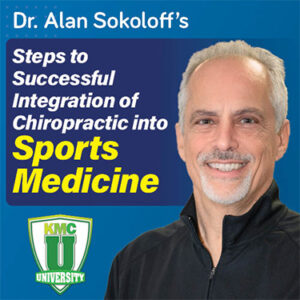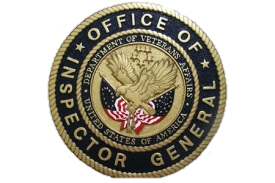There’s More to the Story on Roller Table Traction
It’s important to keep in mind that CPT® coding is coding, and advocacy is advocacy. Coding rules put forth by the CPT® Editorial Panel of the American Medical Association (AMA) and approved by the Center for Medicare and Medicaid Services (CMS), may not be the end of the story. These are actually coding guidelines, and sometimes AMA and CMS don’t even agree.
When it comes to Roller Table Traction, the AMA CPT® Assistant, in a coding clarification, indicated that it wouldn’t be appropriate to code this as 97012, Mechanical Traction. However, we’d like to call your attention to a court case (Blue Cross/Blue Shield of Rhode Island vs. Korsen) in which roller table traction WAS allowed to be billed as 97012. This is a prime example of precedent being set outside of coding rules. Payers may choose which guidelines to follow and can set the rules that they feel are appropriate. However, this is an excellent example of someone who fought back and won. Please keep in mind, as payers update their policies to align with CPT®, what may have been allowed may no longer be allowed. With this in mind, be sure to review the coding guidelines from the payer that align to the dates of services submitted on the claim. The same goes for CPT® guidelines, make sure you are looking at dates of service and the date of coding guidance.
Example of CPT® Editorial Panel of the American Medical Association (AMA)
Medicine: Physical Medicine and Rehabilitation
Question: Can the use of a chiropractic roller table that is an adjustable device used to create a massaging effect along the spine be reported with code 97012.
Answer: No, the chiropractic roller table is a device that has adjustable mechanical rollers requiring stationary, supine positioning of a patient. The rollers can be adjusted for height and do not require constant one-on-one attendance with the patient to create a massaging effect along the spine. Tension via the adjustable rollers can create traction forces resulting in separation between vertebral joint surfaces. A review of the literature at the time of this printing does not support a roller table meeting the requirement of autotraction, the use of the body’s own weight to create sufficient force allowing for separation between joint surfaces, that may be reported with 97012, Application of a modality to 1 or more areas; traction, mechanical. Therefore, code 97039, Unlisted modality (specify type and time if constant attendance), should be reported.
July 2020 pages 13-14
The court case link above is a direct link to the full result of the court case. We’ve excerpted the most interesting findings of the case for your reference.
Is it mechanical traction?
The Court found that intersegmental traction performed on a roller table, such as the Thomas Table or Omega Chair, is a form of mechanical traction. The testimony concerning the operation of the Table indicates that the pressure of the rollers serves to separate the vertebrae like that achieved by other forms of traction. Therefore, the operation of the roller Table fits the definition of mechanical traction provided in the ChiroCode book and was properly coded by Defendants using CPT Code 97012. The evidence demonstrates further that this equipment was marketed to perform traction and its use for this purpose is widely accepted in the chiropractic community, or at least was so in the past.
The Court’s factual conclusions
The Court found that Blue Cross failed, by a preponderance of evidence, to establish that treatment on intersegmental traction equipment is not a form of mechanical traction. The Court also found that Blue Cross failed to prove by clear and convincing evidence that Dr. Korsen and Barlow were engaged in intentional fraud or misrepresentation when they identified this service with the mechanical traction code 97012.
The following facts, copied directly from the case, were used to win the case:
- A Tru–Trac roller table was used to provide traction in an experiment reported in The Lancet in 1981. (Ex. UUU).
- A booklet providing a seminar for “Billing and Coding Physical Medicine Services,” included the use of the roller table under the heading “97012—Mechanical Traction.” (Ex. WWW).
Prevalence of intersegmental traction in chiropractic field:
Many chiropractic offices use the Thomas Table and Omega Chair, or similar motorized equipment with rollers. This equipment was marketed to perform traction, as was demonstrated by the materials that Dr. Korsen sent to Blue Cross after the site inspection. Moreover, equipment such as Dr. Korsen’s appears to have been commonly used in the chiropractic community. A brochure from the office of another Rhode Island chiropractor advertised the use of a roller table for intersegmental traction and mechanical traction, “for the purpose of stretching spinal joints, increasing mobility.” The brochure continues, “Each of these machines has rollers that are brought up under your back, helping to reduce tension, break up scar tissue, hydrate discs, and bring new blood and fluids to the area, helping your body to heal faster.” A brochure from the United Hospital System in Wisconsin lists among its chiropractic services: Mechanical Intersegmental Traction
- Dr. Korsen relied on the 2009 ChiroCode Deskbook for coding although this reference book is not prepared by the AMA. The ChiroCode defines mechanical traction as the force used to create a degree of tension of soft tissues and/or allow for separation between joint surfaces. The degree of traction is controlled through the amount of force (pounds) allowed, duration (time), and angle of pull (degrees) using mechanical means. Terms often used in describing pelvic/ cervical traction are intermittent or static (describing the length of time traction is applied) or auto traction (use of the body’s own weight to create the force). (Ex. EEEE).
- An article from the Journal of Chiropractic Medicine included in its treatments “positional traction on an intersegmental traction table.” The article refers to the placement of the rollers and includes a photo of the patient on the table, with no sign or mention of any harness or strap. (Ex. 68).
- The testimonial evidence at the trial demonstrated that Dr. Korsen had been instructed on the use of this equipment at chiropractic school and had used the equipment in previous practices before he moved to Rhode Island.
- Dr. Korsen testified that he was taught to use equipment similar to the Thomas Table and the Omega Chair at Palmer College of Chiropractic between 1987 and 1992 in a physiotherapy class and in a hands-on clinic that was part of his training. Moreover, treatment on the motorized equipment in the clinic was identified as mechanical traction for billing purposes. Dr. Korsen’s physiotherapy textbook, written by his instructor, Professor Morley, included “Intermittent (sic) Mechanical Traction” in the chapter on Traction:
When working with third-party payers, it is critical to look at all the guidance on coding, the payer’s medical review policy, and the precedent set regarding the code. This was an instance in which Dr. Korsen won the case based on the coding. The medical necessity of the roller table traction was not considered, as far as we can tell from the case. Make sure that when you prescribe any service, you have clear medical necessity or clinical appropriateness well documented. Using all your sources, code the service based on the best information you have at the time.


Kathy recently gave a one hour webinar on coding and billing changes for 2023 to our membership. The feedback from attendees was extremely positive with a deep appreciation to KMCU for sharing timely, relevant and important information/changes for members to use in their practices immediately. Thank you for sharing your expertise with Vermont, KMCU!





